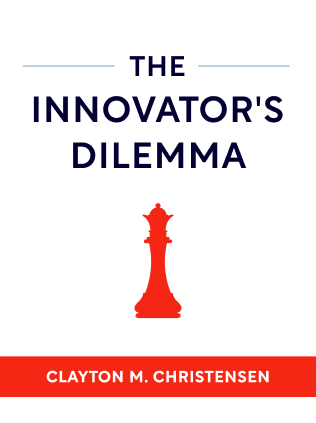

This article is an excerpt from the Shortform summary of "The Innovator's Dilemma" by Clayton M. Christensen. Shortform has the world's best summaries of books you should be reading.
Like this article? Sign up for a free trial here .
What is a market disruptor? How does disrupting markets provide an advantage to innovators?
A market disruptor is an innovation that can shake established industry leaders. The strategy of disrupting markets can help those that pioneer new technologies.
Read more about what a market disruptor is and how it can affect an established company.
What Is a Market Disruptor?
A market disruptor has the potential to upend industries. These kinds of significant innovations—called disruptive innovations—don’t come along very often, but when they do, they change how companies make and market products, the types of customers who buy the products, and how they use the products.
When a market disruptor emerges, dominant, well-run companies often stumble. These companies tend to use the same sound business judgment that has guided them through previous changes, including:
- Listening to what current customers want
- Providing more and improved versions of what customers want
- Investing in projects that promise the highest returns
However, otherwise successful strategies don’t produce the same results when facing innovations that are disrupting markets. This is the innovator’s dilemma: The approaches that lead to success in adopting most innovations lead to failure when confronting disruptive innovations.
This book provides insight for both innovators and established companies’ leaders on how to navigate disruptive innovations. The author takes on two key questions:
- Why do so many successful businesses fail when confronted with disruptive innovations in their industries?
- How can businesses succeed despite the unpredictability of disruptive innovation?
There’s no way to get around the uncertainty of innovation, but you can reduce the uncertainty by understanding the traits of disruptive innovations, effective strategies for adopting them, and how to tell the difference between a disruptive and non-disruptive innovation.
A disruptive innovation represents a dramatically new way of doing things. After it matures, it will have revolutionized an industry and displaced the existing market leaders.
However, at the very beginning, the disruptive innovation looks like a toy, too simple or underpowered for use by the industry’s main customers. It appeals only to a small niche in a small market, and so incumbent companies don’t see it as a big enough opportunity to pursue. Therefore, disruptive innovations usually come from upstarts who aren’t bound by the same requirements for large profits as incumbents.
However, what the incumbent companies don’t realize is that, over time, the disruptive product iteratively improves to be more and more capable. Eventually, it catches up to the existing product and does a good enough job, and often much more cheaply as well. Soon, the innovative product even leapfrogs the existing product, which has plateaued in its improvements due to limitations in its technology.
Principle #1: Customers and Investors Dictate Company Resources
The theory of resource dependence states that managers don’t control how resources are spent—customers and investors do, because their interests determine the company’s success.
Principle #2: Small Markets Can’t Keep Big Companies Alive, Even With a Market Disruptor
Companies are pressured to continually grow, and, the bigger they get, the more profits they need to cover increasing costs. If two companies both need to sustain 20 percent growth rates, but one is a $40 million company and the other is a $4 billion company, the larger company faces greater pressure to gain $800 million in new sales compared to the smaller company’s $8 million.
Principle #3: There’s No Market Research for the Unknown Market of a Market Disruptor
Most companies and managers make strategies, plans, and decisions based on analyses of market trends and projections based on those trends. Using this data, managers make detailed plans for executing new projects.
Principle #4: A Company’s Capabilities in One Context Are Disabilities in Another
Established firms become successful by developing certain capabilities that help them to efficiently and profitably develop, market, and sell their goods or services. Each company’s capabilities are specific to its product and the value networks.
Principle #5: Customers Don’t Always Want the Newest Technological Advance
As we talked about, technology often advances more rapidly than customers’ demand for bigger, better, faster products.
As we’ve seen, a market disruptor can cause companies to fail despite—and even because of—prudent business practices, such as listening to customers and pursuing high-profit markets.
However, leaders of established companies can find hope in the fact that solving the innovator’s dilemma isn’t a matter of working harder or making smarter decisions. Successfully navigating a disruption in your industry is simply a matter of understanding when you’re confronting a disruptive technology and how to handle it.

———End of Preview———
Like what you just read? Read the rest of the world's best summary of Clayton M. Christensen's "The Innovator's Dilemma" at Shortform .
Here's what you'll find in our full The Innovator's Dilemma summary :
- Christensen's famous theory of disruptive innovation
- Why incumbent companies often ignore the disruptive threat, then move too slowly once the threat becomes obvious
- How you can disrupt entire industries yourself






